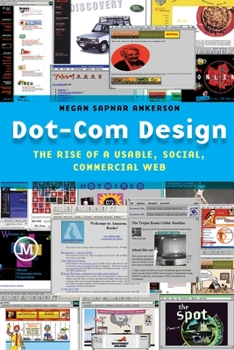Dot-Com Design: The Rise of a Usable, Social, Commercial Web
(Part of the Critical Cultural Communication Series)
Select Format
Select Condition 
Book Overview
From dial-up to wi-fi, an engaging cultural history of the commercial web industry
In the 1990s, the World Wide Web helped transform the Internet from the domain of computer scientists to a playground for mass audiences. As URLs leapt off computer screens and onto cereal boxes, billboards, and film trailers, the web changed the way many Americans experienced media, socialized, and interacted with brands. Businesses rushed online to set up corporate "home pages" and as a result, a new cultural industry was born: web design. For today's internet users who are more familiar sharing social media posts than collecting hotlists of cool sites, the early web may seem primitive, clunky, and graphically inferior. After the dot-com bubble burst in 2000, this pre-crash era was dubbed "Web 1.0," a retronym meant to distinguish the early web from the social, user-centered, and participatory values that were embodied in the internet industry's resurgence as "Web 2.0" in the 21st century.





